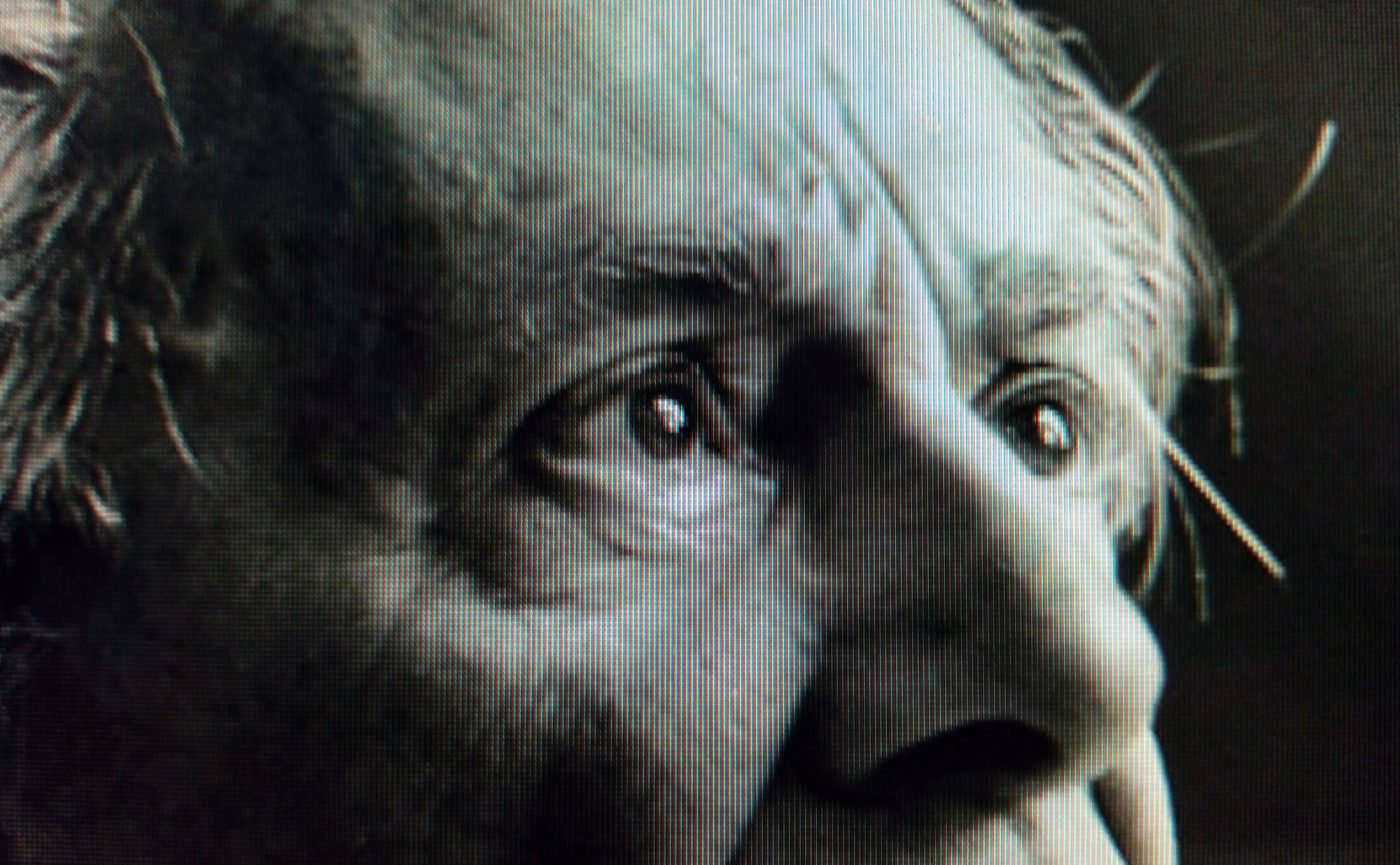Seminar held on 7 November 2020 at the Fondazione Cassa di Risparmio di Jesi, as part of the cycle entitled Interventi intorno Chiari
Postmodern thought
1883-85 Thus Spoke Zarathustra. A book for everyone and no one
1896 Bergson’s Matter and Memory
1899 Freud’s Interpretation of Dreams
1905 Die Brücke (Expressionism)
1907 Cubism
1909 First Manifesto of Futurism
1910 ca. Abstractionism
1913 Russian Constructivism
1914-18 First World War
1916 Dadaism
1913 On Swann’s Side by Marcel Proust
(first volume of In Search of Lost Time)
1914 The Trial of Franz Kafka
1914 Metaphysical Painting
1921 Einstein’s Theory of General Relativity
1922 Ulysses by James Joyce
1923 The Conscience of Zeno by Italo Svevo
1921 Opus I by Walter Rutmann
1930 Weekend Walter Rutmann
1924 Surrealism
1925 Magic Realism (or New Objectivity)
1939-45 Second World War
1940s Informal and Abstract Expressionism
Second half of the 1950s New Dada and Pop Art
1960s Optical Art and Cold Currents
1970 Third Industrial Revolution Computer Science, Electronics and Telecommunications
1971 Information Age
Postmodernism is determined as a response to the dreams shattered by totalitarianism, the two world wars and the two atomic bombs. In 1979, Lyotard (Jean-François Lyotard 1924-1998), the French philosopher and theorist of postmodernism, described it as post-idealist, post-Marxist and post-Enlightenment, decreeing the end of that project of progress based on the continuity of past, present and future. All that remained to replace it was instability, fragmentation and episodicity.
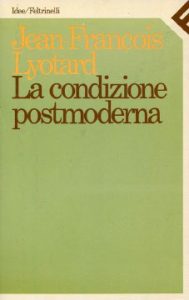
In it, Lyotard determines the conclusion of modernity, since its three main axes (meta-narratives) have fallen: enlightenment, idealism, Marxism and with them the tension towards a unitary science devoted to progress, that is, the idea of history as progressive emancipation.
It decreed the birth of Postmodernism, characterised by fragmentation, multiplicity, instability and polymorphism.
The nature of Lyotardian thought is perhaps even more pregnant in a later text such as Peregrination. Law, Form, Event (1992), in which the philosopher focuses his attention precisely on philosophical thought, and within which he compares thoughts to clouds. Every thought, Lyotard argues, is a cloud on which, while we are thinking it, the shadow of the next cloud rests; it is therefore impossible to formulate a concluded thought, since every instant is a beginning in the middle of time, and it is therefore a deception to profess oneself as a philosopher or writer.
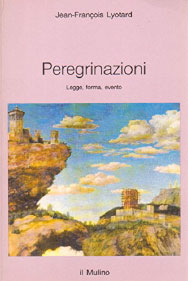
Thoughts are clouds […] One cloud casts its shadow on another; the shadow of the clouds varies according to the angle from which you consider them […].
One declares oneself a philosopher or a writer: one must confess oneself an impostor. There is no thought that does not carry with it a sense of its own unworthiness. The only way to get out of it, at least a little, is to exhibit the ineluctable: one thinks here and now, in situation, and in one situation of thought at a time. Thus, what threatens the work of thinking (or writing) is not so much that it remains episodic, but that it pretends to be complete.
Each instant is a beginning in the middle of time.
Interestingly, the cloud metaphor is also used by the physicist Prigogine (Ilya Prigogine 1917-2003) in scientific dress. Quoting Popper (Karl Popper 1902-1994), he argues that while the mechanical physics born with Newton dealt with clocks, the modern physics born with Einstein deals with clouds. The new physics, having introduced the arrow of time – along which events take place and with the possible intervention of external agents that cause variations – finds itself uncertain, because at any given moment the arrow can be fractured, assuming unexpected directions. While mechanical physics considered phenomena to be immutable, modern physics is proving to be probabilistic. In order to clarify the nature of clouds, I have recourse to a collection of short stories entitled Staccando l’ombra da terra (Detaching the shadow from the ground) by Daniele Del Giudice (1949), who was particularly active in the post-modern period and who, for this reason, I am quoting, states that clouds are neither a state nor an object, but a constant transition. A description that he derives from l Luke Howard (1772-1864), the first to have studied them scientifically.
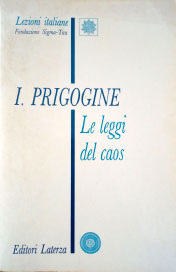
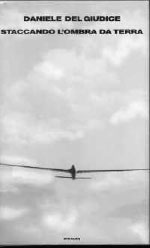
Popper uses a beautiful expression, he talks about clocks and clouds. Classical physics was primarily concerned with clocks, modern physics is primarily concerned with clouds […] This is a radical change in point of view: for the classical view, stable systems were the rule and unstable systems were exceptions, whereas today we are reversing this perspective. Once we have obtained the irreversibility and the arrow of time, we can study this arrow on other symmetry breaks and on the simultaneous emergence of order and disorder at the macroscopic level. However, in both cases it is from chaos that order and disorder emerge at the same time.
Ilya Prigogine, The Laws of Chaos, 1993
The cloud was never what it should have been, the only one who understood this, the only one who accepted it was the one who had given the name to clouds, the first to decide that they would be called cirrus, cumulus, cirro-stratus or cumulo-nimbus, Luke Howard, an Englishman, the only one who had understood that the cloud is not an object, it is not a state, but is a constant transition, and should be described as such, which is why he had entitled his book On the modifications of clouds.
Daniele Del Giudice, Fino al punto di rugiada, in Staccando l’ombra da terra, 1994.
Lyotard’s positions were taken up by the theorists of the neo-avant-garde – which essentially coincided with the Gruppo ’63 (1) – and in particular by Guglielmini (1929), who argued that reality could no longer be interpreted according to the cultural and ideological project of the previous Neo-realism, and consequently the new avant-garde had to present itself as a-ideological, disengaged and a-temporal.
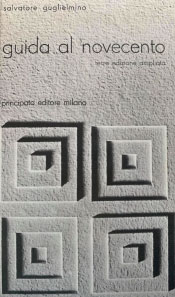
“The theorists of the avant-garde maintain that interpreting reality, representing it starting from ideological premises that situate the facts in a certain perspective and hierarchy is no longer possible: it means giving false images of reality, since this reality is thus forced into the Procrustean bed of ideology. Today, however, no ideology is able to offer an exhaustive interpretation of the world, and when an attempt is made to use them in this sense, they can only produce false meanings, argues A. Guglielmini. Guglielmini. And he adds: the visceral line of contemporary culture in which the only possible avant-garde today is to be recognised is a-ideological, disengaged, ahistorical, in a word timeless; it does not contain messages, nor does it produce general meanings. It knows no rules (or laws) either as a condition of departure or as a result of arrival. Its aim is to recover the real in its intactness: what it can do by removing it from history, discovering it in its most neutral meaning, in its most impartial version, at degree zero.
Salvatore Guglielmino, Guida al Novecento, [1971], Milan, Casa Editrice G. Principato, 1982, p.385).
Literary neo-avant-garde (exponents of the Gruppo ’63 and authors close to it)
Alberto Arbasino, Luciano Anceschi, Nanni Balestrini, Renato Barilli, Achille Bonito Oliva, Giorgio Celli, Furio Colombo, Corrado Costa, Fausto Curi, Roberto Di Marco, Stefano Docimo, Umberto Eco, Enrico Flippini, Alfredo Giuliani, Alberto Gozzi, Angelo Guglielmini, Patrizia Vicinelli, Germano Lombardi, Giorgio Manganelli, Giulia Niccolai, Elio Pagliarini, Michele Perriera, Lamberto Pignotti, Antonio Porta, Edoardo Sanguineti, Giuliano Scabia, Adriano Spatola, Aldo Tagliaferri, Giancarlo Marmori, Gian Pio Torricelli and Sebastiano Vassalli
Oreste Del Buono, Nanni Cagnone, Gianni Celati, Alice Ceresa, Giordano Falzoni, Luigi Gozzi, Francesco Leonetti, Luigi Malerba, Marina Mizzau, Rossana Ombres, Nico Orengo
Bibliography
AA.VV., Desideri in fiorma di nuvole. Cinema e fumetto, Paisan di Prato (UD), Campanotto Editore, 1996.
AA.VV., Gulp! 100 anni a fumetti, Milano, Electa, 1996.
AA.VV., Nuovo fumetto italiano, Milano, Fabbri Editori, 1991.
ANTOCCIA Luca, Il viaggio nel cinema di Wim Wenders, Bari, Dedalo Edizioni, 1994.
ARGAN Giulio Carlo, L’arte moderna 1770/1970, [1970], Firense, Sansoni Editore, 1982.
ARNHEIM Rudolf, Arte e percezione visiva, [1954], Milano, Feltrinelli, 2002.
AUMONT Jacques MARIE Michel, L’analisi dei film, [1988], Roma, Bulzoni Editore, 1996.
BAIRATI Eleonora – FINOCCHI Anna, Arte in Italia, volume 3, [1984], Torino, Loescher Editore, 1991.
BARBIERI Daniele, I linguaggi del fumetto, Milano, Bompiani, 1991.
BARILLI Renato, Il cilclo del postmoderno. La ricerca artistica degli anni’80, Milano, Feltrinelli, 1987.
BARILLI Renato, Informale oggetto comportamento 1. La ricerca artistica negli anni’50 e’60, Milano, Feltrinelli, 1979.
BONITO OLIVA Achille, L’ideologia del traditore – Arte, maniera, manierismo, [1976], Milano, Feltrinelli, 1981.
BORDONI Carlo FOSSATI Franco, Dal feuilleton al fumetto. Generi e scrittori della letteratura popolare, Roma, Editori Riuniti, 1985.
BOSCHI Luca, Frigo valvole e balloons. Viaggio in vent’anni di fumetto italiano d’autore, Roma-Napoli, Edizioni Theoria, 1997.
BOURRIAUD Nicolas, Il radicante, [2009], Milano, Postmedia, 2014.
BRANCATO Sergio, Fumetti. Guida ai comics nel sistema dei media, Roma, Datanews Editrice, 1994.
CALVESI Maurizio, Le due avanguardie. Dal Futurismo alla Pop Art, Bari, Laterza, 1991.
CARA Giovanni, Scrittori e popelin, Civitanova Marche, Gruppo Editoriale Domina, 2003.
CAROCCI Giampiero, Elementi di storia – L’Età delle rivoluzioni borghesi, volume 2, [1985], Bologna, Zanichelli, 1990.
CAROLI Flavio, Magico primario, Milano, Gruppo Editoriale Fabbri, 1982.
CASETTI Francesco DI CHIO Federico, Analisi del film, Milano, Bompiani, 1990.
COSTA Antonio, Il cinema e le arrti visive, Torino, Einaudi, 2002.
DEBENEDETTI Giacomo, Il Romanzo del Novecento, [1971], Milano, Garzanti Editore, 1989.
DEL GIUDICE Daniele, Staccando l’ombra da terra, Milano, Edizione CDE, 1994.
DEL GUERCIO Antonio, Storia dell’arte presente, Roma Editori Riuniti, 1985.
DE MICHELI Mario, Le avanguardie artistiche del Novecento, [1986], Milano, Feltrinelli, 1988.
DE VECCHI Pierluigi CERCHIARI Elda, Arte nel tempo, [1991], Milano, Bompiani, 1996.
DE VINCENTI Giorgio, Andare al cinema, Roma, Editori Riuniti, 1985.
DORFLESS Gillo, Ultime tendenze nell’arte d’oggi, [1961], Milano, Feltrinelli, 1985.
FAETI Antonio, Guardare le figure, [1972], Roma, Donzelli Editore, 2011.
FARNÉ Roberto, Iconologia didattica – le immagini per l’educazione dell’Orbis Pictus a Sesame Street, [2002], Bologna, Zanichelli Editore, 2006.
FAVARI Pietro, Le nuvole parlanti. Un secolo di fumetti tra arte e mass media, Bari, Edizioni Dedalo, 1996.
FRESNAULT-DERUELLE Pierre, I fumetti: libri a strisce, [1977], Palermo, Sellerio Editore, 1990.
FREZZA Gino, La scrittura malinconica. Sceneggiatura e serialità nel fumetto italiano, Firenze, La Nuova Italia, 1987.
GUGLIELMINO Salvatore, Guida al novecento, [1971], Milano, Editrice G. Principato s.p.a., 1982.
HARVEY David, La crisi della modernità, [1990], Milano, Il Saggiatore, 1997.
HONNEF Klaus, L’arte contemporanea, Köln, Taschen, 1990.
HUGHES Robert, Lo shock dell’arte moderna, Milano, Idealibri, 1982.
KUBLER George, La forma del tempo, [1972], Torino, Einaudi, 1989.
LYOTARD Jean-François, La condizione postmoderna, [1979], Milano, Feltrinelli, 1990.
LYOTARD Jean-François, Peregrinazioni. Legge, forma, evento, [1988], Bologna, Il Mulino, 1992.
MALTESE Corrado, Guida allo studio della storia dell’arte, [1975], Milano, Mursia, 1988.
MALTESE Corrado, Storia dell’arte in Italia 1785-1943, [1960], Torino, Einaudi, 1992.
MENNA Filiberto, La linea analitica dell’arte moderna, [1975], Torino, Einaudi, 1983.
MILA Massimo, Breve storia della musica, [1963], Torino, Einaudi, 1993.
MONTANER Josep Maria, Dopo il movimento moderno. L’architettura della seconda metà del Novecento, [1993], Roma, Laterza, 1996.
PALLOTTINO Paola, Storia dell’illustrazione italiana, [2010], Firenze, VoLo Publisher, 2011.
PELLITTERI Marco, Sense of comics, Roma, Castelvecchi, 1998.
PRIGOGINE Ilya, Le leggi del caos, Bari, Laterza, 1993.
RAFFAELI Luca, Il fumetto, Milano, il Saggiatore, 1997.
REY Alain, Spettri di carta, [1982], Napoli, Liguori, 1988.
RICCIARDI Enrica, Il cuore delle nuvole. Arte figurativa e fumetto, Paisan di Prato (UD), Campanotto Editore, 1996.
RICOEUR Paul, Tempo e racconto 2. La configurazione nel racconto di finzione, [1984], Milano, Jaca Book, 1994.
RICOEUR Paul, Tempo e racconto 3. Il tempo raccontato, [1985], Milano, Jaca Book, 1988.
SCARUFFI Piero, Guida all’avanguardia e New Age, Milano, Arcana Editrice, 1991.
VALLI Bernardo, Lo sguardo empatico. Wenders e il cinema nella tarda modernit´, Urbino, Edizioni Quattroventi, 1990.
VALLIER Dora, L’arte astratta, Milano, Garzanti, 1984.
WORRINGER Wilhelm, Astrazione ed empatia, [1908], Torino, Einaudi, 1975.
Website
CAMPA Riccardo, Dal postmoderno al postumano: il caso Lyotard, in Letteratura-Tradizione, volume 42, 2008, https://ruj.uj.edu.pl/xmlui/handle/item/58854

